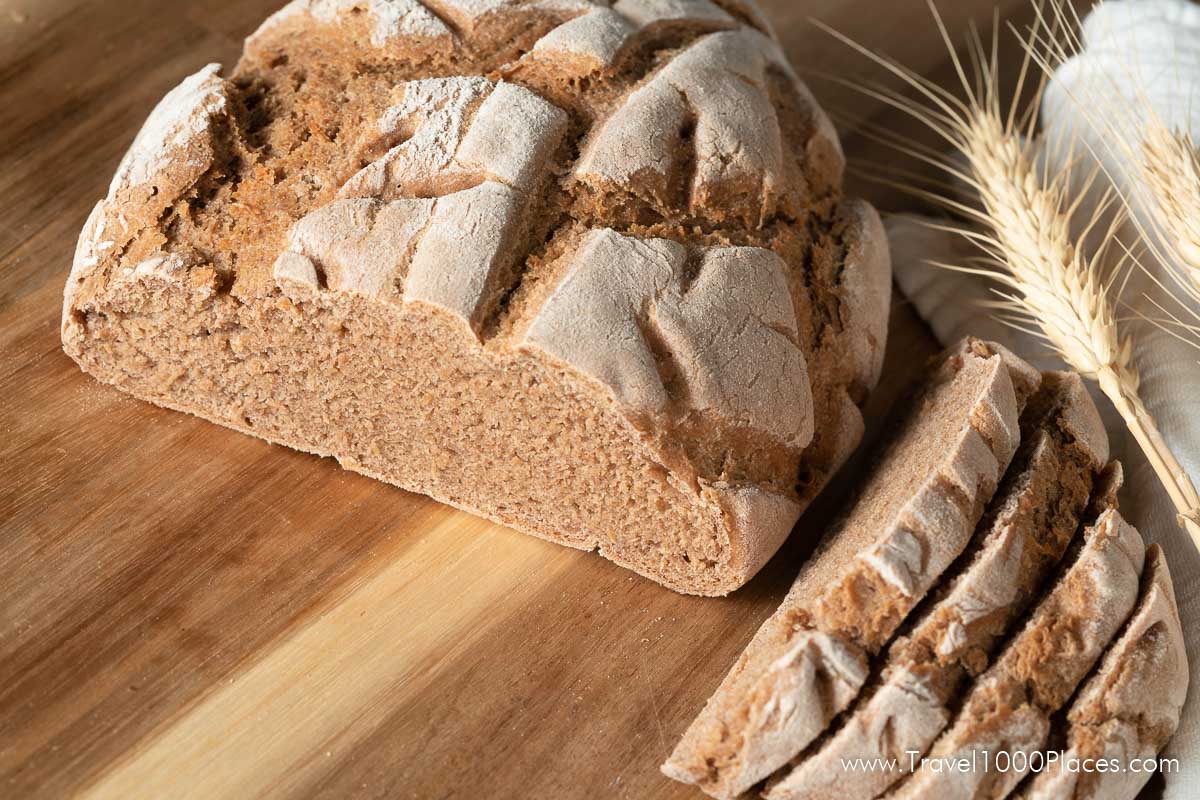
Bread is an essential part of the diet of Germans. Regional German Bread Specialties add to the anyway huge variety of common bread recipes.
Germany is widely regarded as the country with the widest variety of different breads. Around half of all the bread eaten in Germany is Mischbrot, made from a mix of rye and wheat flour.
In the German-speaking world alone, you can choose from more than 300 different types of brown, white and rye bread, and in slightly more coarse version also known as „black“ bread.
In days gone by, the color of the bread was of great significance. „Black“ bread was always cheaper and was therefore a basic foodstuff for the poor.
White bread, on the other hand, was more expensive and could only be afforded by aristocrats and rich people for centuries.
Fortunately, those days are gone and everyone can now choose which one they prefer.
Variety in terms of our „daily bread“ is therefore playing an increasingly important role.
After all, every German eats an average of 87 kg of bread a year and, let‘s face it, anyone would get fed up of eating the same thing all the time. Breads made from a mixture of wheat flour and other flours are among the most popular.
Baguette, ciabatta, white bread and wheat toast bread fall into this category and come in a host of different varieties.
In German language it is common to differentiate between 3 base types of bread: Weißbrot, Graubrot and Schwarzbrot.
Weißbrot (white bread) refers to all types of white bread types stemming from wheat flour recipes, however, there are the sub-types Baguette, Toast and regular Weißbrot. Graubrot (grey bread) misleads a little bit because actually all darker, brownish breads are meant by that term. A graubrot is a rye or mixed rye-wheat bread and there exists a huge variety of recipes, more variety than with the other types of bread. Same with Schwarzbrot (black bread): actually it refers to all sort of whole grain, coarse dark brown bread types and those aren’t really black. Pumpernickel is the only one that sometimes looks almost black but it really depends on the recipe.
In Germany you buy bread either in a supermarket or in a bakery — the latter can be found a lot in all cities and small towns. Industrial baked and packaged bread doesn’t taste as good as bread from a bakery, however, it is really cheap. If you are a visitor to Germany and you want to indulge into the bread culture you must go to a bakery to get the right impression.
Wheat-based Mischbrot (mixed bread) contains between 51 and 89 per cent wheat flour. A number of specialist loaves are wheat-based mixed bread. The higher the percentage of wheat flour, the milder the bread.
It is usually mixed with rye flour, which gives the bread a heartier taste and makes it last longer. Typical wheat-based mixed breads include Kasseler Brot, Schwäbisches Bauernbrot, Hamburger Feinbrot, Winzerkruste and Schwarzwälder Brot.
Rye-based mixed breads contain between 51 and 89 per cent rye. The higher the rye content, the more aromatic and acidic the bread. Typical varieties include Korbbrot, Mecklenburger Landbrot and Paderborner Brot.
Rye bread has a minimum rye content of 90 per cent. A souring additive must be added to the rye dough before baking. The sour dough is made by mixing flour with water and then introducing heat. This gives the bread a bitter, acidic taste, which can be made milder by adding wheat flour.
Germany also has a variety of breads made from special grains and cereal grains such as oats or millet, or using specially processed grain products such as Steinmetzbrot (wholemeal mixture with 30 per cent coarse grain) or Schlüterbrot (rye bread) or special baking procedures such as bread that is steamed in the oven, e.g. Pumpernickel, bread baked in a wood fired oven and crisp breads

